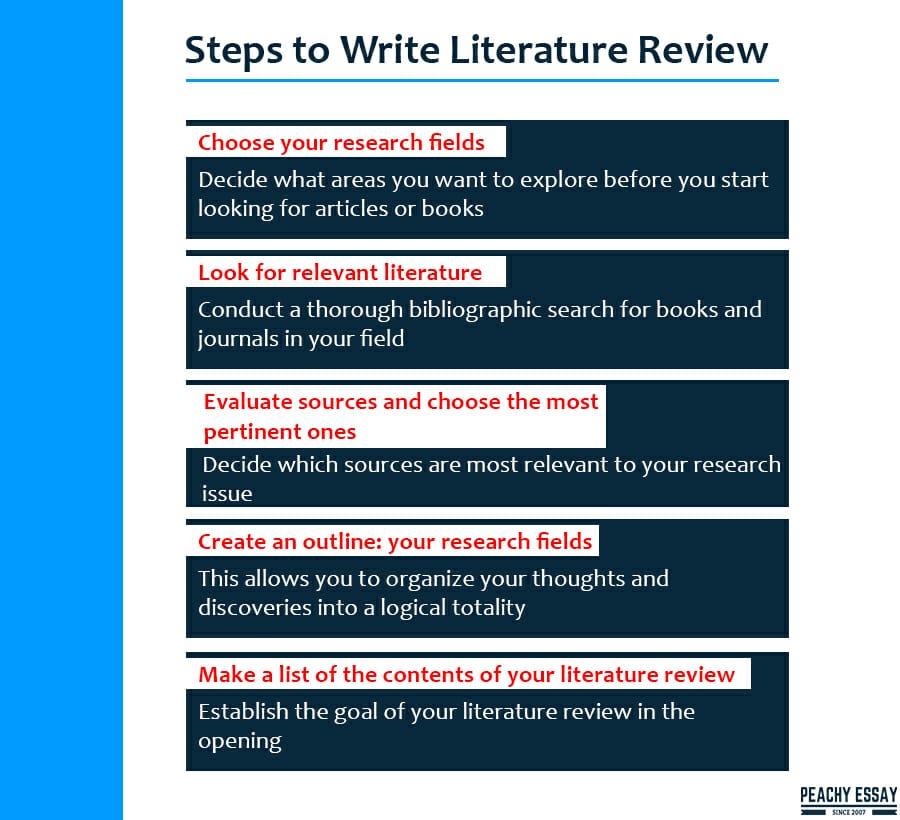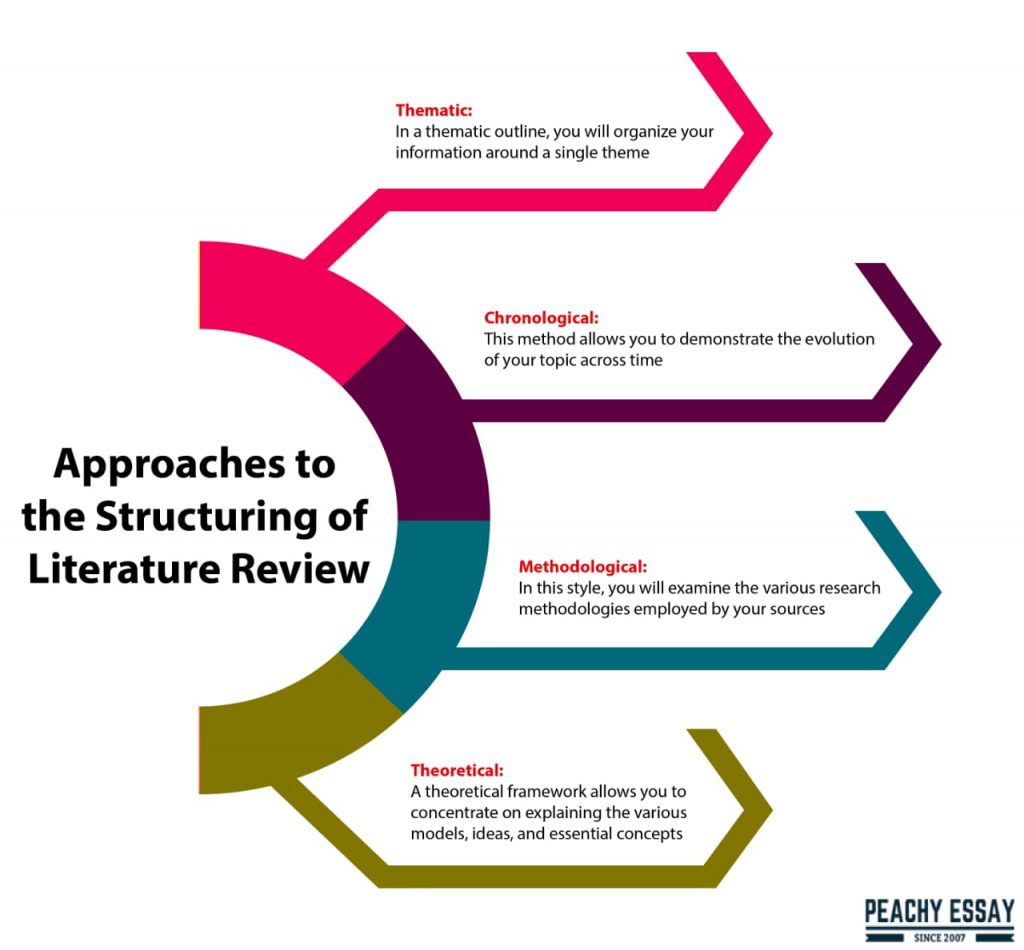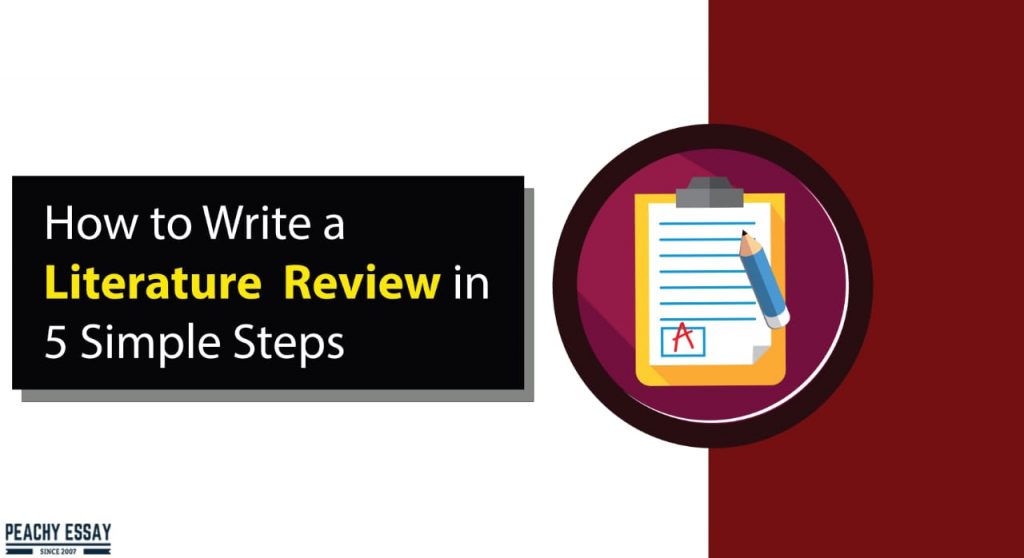If you are a college or graduate student, you will almost certainly be required to produce a thesis or dissertation. Likewise, if you’re a corporate office employee, you may be required to conduct research.
Writing an academic paper does not have to be difficult if you understand the various components, why they are important, and how to write them. The literature review is one of the first and most crucial tasks in producing an academic paper.
What is a Literature Review?
A literature review is a collection of scholarly publications that explore the issue under consideration. A literature review allows you to highlight essential ideas and methodologies while also highlighting gaps in whatever research currently exists because it provides an overview of existing research. This lays a solid basis for the rest of your paper.
It should be noted that a literature review might also be a stand-alone paper that you are required to prepare. This is the situation when you are asked to investigate the existing state of research on your issue and then analyze and synthesize your results.
How to Write a Literature Review
Because the literature review is the foundation of your research, it is critical to write a clear and thorough evaluation. The steps below will assist you in doing so:

Choose your research fields
Decide what areas you want to explore before you start looking for articles or books. Then, even if you come across great books on other topics, make sure you only get articles and books in those fields. A current literature study I’m working on, for example, investigates impediments to higher education for undocumented students.
Look for relevant literature
Conduct a thorough bibliographic search for books and journals in your field. First, read the abstracts online and download and/or print the papers relevant to your field of study. Then, find appropriate books in the library and check them out. Set a time limit for how long you will search. It should only take two or three devoted sessions.
Evaluate your sources and choose the most pertinent ones
Because you will not have time to read every single article you come across, you must decide which sources are most relevant to your research issue. First, consult the most reputable sources and then read significant theories and landmark studies.
Examine the contents of each book and article for the following five items:
- Claims, conclusions, and findings of the constructs under consideration
- Terminology definitions
- Requests for follow-up studies related to your project
- Observed gaps in the literature
- Disagreement regarding the constructions you’re looking into
- Determine major issues, disputes, and research gaps.
After you’ve gathered your sources, it’s time to organize them. This can be accomplished by first identifying any underlying themes. These can take the following forms:
Trends or patterns: Are there methods that are getting more or less popular over time?
Themes: Are there any repeating themes that stand out to you in all of the literature you’ve read?
Disagreements, inconsistencies, or debates: What are the places where your sources disagree?
Publications of historical significance: What other research or idea is having a significant impact on how the field is evolving?
Research gaps: What topics haven’t been thoroughly covered in the background literature you’ve compiled? What flaws do you believe should be addressed in your paper?
Create an outline
It is generally ideal for creating an outline for academic papers before you begin writing. This allows you to organize your thoughts and discoveries into a logical totality.
After all, you don’t want your literature review to look like a shopping list that aggregates every piece of material you find without considering how it all fits together.
An introduction, major body, and conclusion should be included in your outline.
Make a list of the contents of your literature review
Now that you have your outline in place, you can begin writing your literature review.
Establish the goal of your literature review in the opening. Then, you can clarify whether the literature review is part of a bigger effort or if it is a standalone piece in this section.
You will begin to elaborate on the ideas you made in your outline in the document’s body. To make the paragraphs more obvious, use subheadings.
How Should a Literature Review be Organized?
Here are the approaches to the structuring of literature review

Thematic
In a thematic outline, you will organize your information around a single theme. Different areas of your study may be divided into subsections that focus on specific aspects of your topic.
Chronological
This method allows you to demonstrate the evolution of your topic across time. While this is useful for demonstrating how theories evolve, make sure to include your own interpretation of trends, turning points, or disagreements, demonstrating how they contributed shape where the subject is headed. One method is to interpret how or why specific developments occurred.
Methodological
In this style, you will examine the various research methodologies employed by your sources, contrasting how they arrived at results or suggestions. In addition, you can talk about how and why the different sources choose particular methodologies, such as whether the source is sociological, cultural, or historical.
Theoretical
A theoretical framework allows you to concentrate on explaining the various models, ideas, and essential concepts associated with your issue.
Outline of the Literature Review
Here are the components of the literature review outline.
Introduction
The introduction defines the issue and specifies the appropriate context for the literature review. It also describes the structure of the material you create and provides the author’s (your) reasons for reviewing the chosen sources.
The main body
The main body is where you organize the sources by topics, present insights, and explain connections between your chosen topic and a broader field of the same issue. Furthermore, this section shifts the emphasis from broad perspectives to a single aspect of the investigation.
Conclusion
The conclusion section highlights key topics discussed in the body of the literature and assesses the relevance of the sources provided. You can also consider the disciplines and routes for future research here and blind spots and missing elements in existing knowledge. Finally, don’t forget to tie your previous work to the academic knowledge that is currently available.
What Should the Literature Review Contain?
The following material should be included in your literature review:
All significant discoveries connected to your topic, with suitable citations
Existing disputes or contentious conversations
Sources of Literature
Journal articles
Journal articles are a great place to start when writing a lit review. These are useful, particularly for current information. These are frequently used in Lit Reviews since they offer concise, up-to-date information. In all reputable journals, peer-reviewed or refereed research is published only after it has been reviewed by other researchers in the field.
Books
A good source for a Lit Review in general. Because books take longer to publish than journal articles, they are typically out of date. Also, because textbooks are designed for teaching rather than research, they are unlikely to be effective in your Lit Review. Still, they do provide an excellent beginning point for finding better, more extensive materials.
Proceedings of a Conference
This is a fantastic resource for a Literature Review. These are excellent for finding out about new research or study that hasn’t been published yet. Furthermore, they provide information on which researchers are active in specific fields, which can be useful for tracking down their other work.
Reports from the government and corporations
This is a fantastic resource for a Literature Review. Many government agencies and businesses commission or conduct research. Depending on your topic of study, their published findings can be a valuable source of knowledge.
Newspapers
For a Lit Review, this is not a good source. Newspaper articles tend to target a general (not specialized) audience; hence, they will not be of use to your Lit Review. Journalists aren’t usually scholars, which means they aren’t specialists on the topics they write about; hence newspaper stories aren’t scholarly sources.
Dissertations and theses
It’s a good place to start if you’re writing a lit review. These can be valuable sources of data. Using student-created research has a number of drawbacks: 1) they are frequently unpublished and only available through interlibrary loan; 2) the student conducting the research may not be a seasoned researcher. Their conclusions should be regarded with greater skepticism than previously published research.
Web pages
Using this as a source for your literature review is not a smart move. One of the fastest-growing sources of information is the Internet. You cannot categorize the information provided by electronic sources, but here are some tips for using them: 1) acknowledge that anyone can post information on the Internet, so the quality may vary, and 2) information posted on the web for general audiences may not be appropriate data for your Lit Review (general audiences tend to need less detail and scholarly information).
Magazines
For a Lit Review, this is not a good source. Magazines aimed at a wide audience, such as Time, Us, and National Enquirer, will not provide you with the information you require. Specialized magazines (for example, business magazines for management students) may be more useful. Magazines, on the other hand, are often only beneficial as a starting point for your study because they contain news or broad information about discoveries, policies, and other topics that may then be further studied in more specialized sources.
What is the difference between a literature review and an annotated bibliography?
A Lit Review is arranged around a guiding topic or thesis and written in an expository essay, with an introduction, body, and conclusion. An annotated Works Cited list, on the other hand, is just an alphabetized list of sources with summaries and evaluations (annotations). While a single source may only appear once in an annotated Works Cited list, it may be mentioned multiple times in a Lit Review, depending on its significance in the area or its relationship to other sources. Finally, a Lit Review has its own set of in-text citations and a Works Cited list.
What distinguishes a literature review from a regular research paper?
A literature review can be written as a stand-alone piece or as part of larger research work (such as a chapter in an honors thesis). The Lit Review is primarily concerned with sources, while the paper’s body is concerned with the topic you are researching. In other words, a research article uses expert sources as support for your thesis, whereas a Literature Review discusses the sources.
What are the Characteristics of a Literature Review?
These are some of the features you should look for in a Lit Review:
- A Works Cited list that includes all sources cited in the Lit Review is required. Sources not directly cited in the Lit Review should not be listed in the Works Cited list.
- A Lit Review is divided into subtopics rather than individual sources. Thus, you can cite numerous references in the same paragraph in a typical Lit Review, and you can mention the same reference in more than one paragraph if the source discusses more than one of the Lit Review’s subtopics.
- Typically, each source is only briefly discussed. Your contribution is to organize the concepts from the sources into a coherent argument or narrative that incorporates your views.
- With each reference, you should concentrate on citing the original material. This may necessitate a close examination of the citation. You should chase down and use the reference if the reference author links to another source whose thoughts are relevant or fascinating. The practice of citing a source that you haven’t read directly is known as “grandfathering,” and it’s not allowed. You should never cite a source that you haven’t read.
Here are a few pitfalls to avoid when reviewing the literature.
Trying to go through everything!
As you may have already realized, attempting to be comprehensive will result in your inability to complete the reading! The goal of the Lit Review is not to list as many books, papers, and reports as feasible. The purpose of the Lit Review is to present a survey of the most relevant and noteworthy published work that relates to your research, rather than a synopsis of all published work that related to your topic. The Lit Review should include the most relevant related studies and demonstrate an understanding of both key past research and practices in the subject and promising current research and practices.
Reading but not writing!
Reading is easier than writing. Many people would prefer to sit down and read an article than sit down and craft what they have already read. Isn’t it true that writing necessitates a greater amount of effort? Writing, on the other hand, can help you comprehend and reveal connections regarding the works you have perused, so don’t wait until you’ve “finished” reading to begin writing – after all, you’ll probably certainly keep reading until your research project is completed. Also, the first draft should not be considered the final or near-final version. Allow yourself as many changes as you need to adjust your ideas and material in order to better comprehend the context of your research challenge.
Not preserving bibliographic data
Once you’re ready to create your Works Cited list, you’ll realize you didn’t save the materials you’ll need, and you never finished referencing your work. Until you go to the library and research all the sources you read and then look over your writing for references to which sources you borrowed information from, the only way to figure out where your information came from is to spend time at the library tracking down all the sources you referenced. Keeping these notes will help you avoid this nightmare in the future. It is always a good idea to cite your sources.


